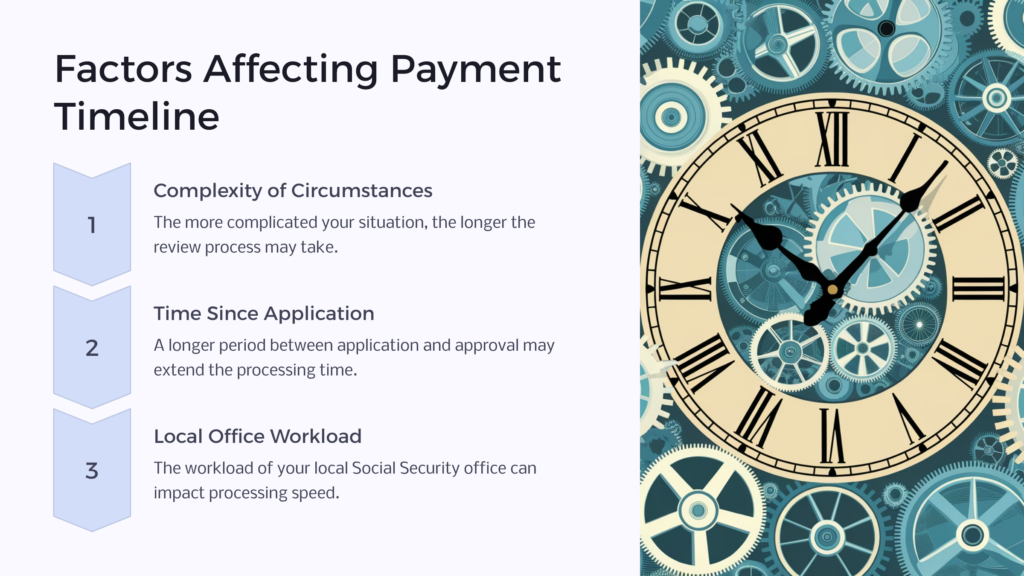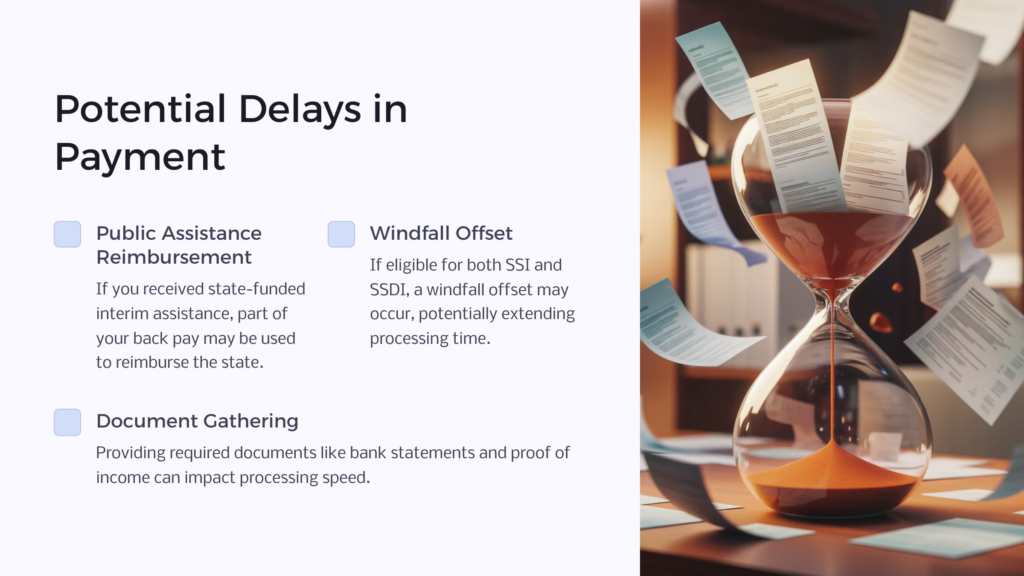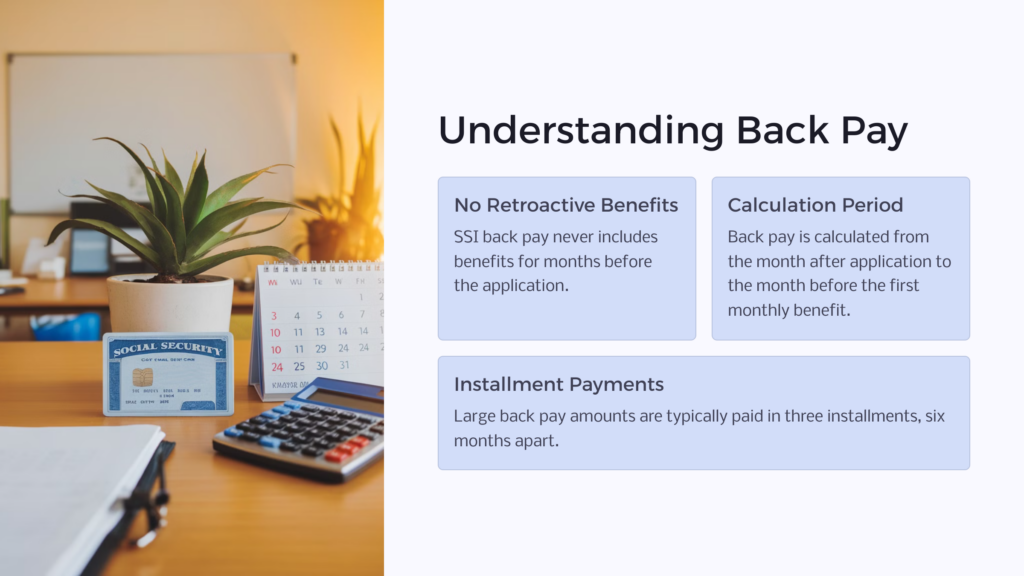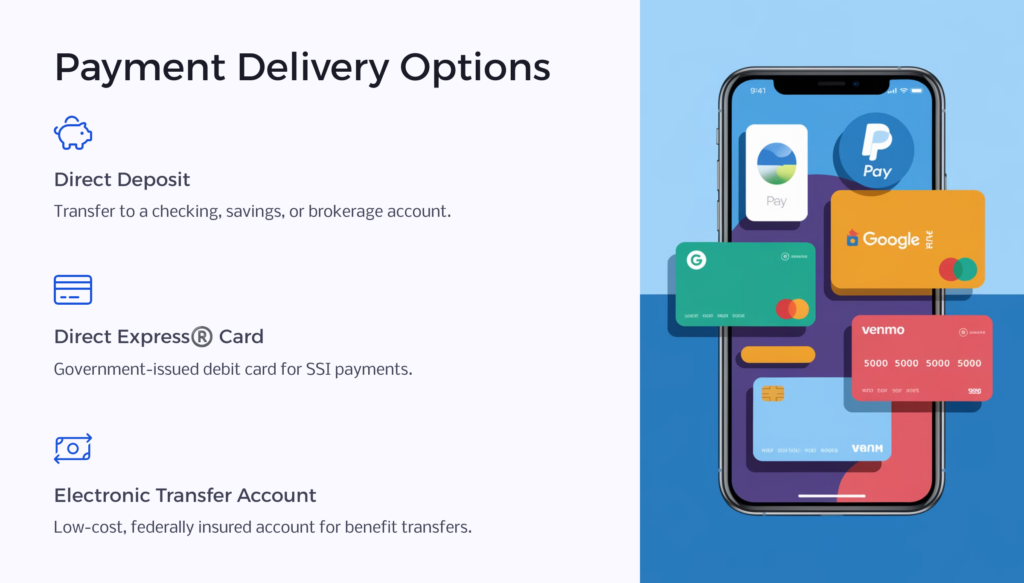How long it takes to get payment started after you have been approved for Supplemental Security Income (SSI) disability benefits depends on multiple variables including how complicated your circumstances are, how much time passes between your application and approval, and how busy and far behind in its work your local Social Security office is at the time of your approval.
SSI is a needs-based assistance program. This means that in addition to being disabled or age sixty-five, to get SSI your countable income (money coming in during a month) and resources (what you own) have to fall within the SSI limits. When you first apply for SSI, the application form screens your financial eligibility and a decision is made based on your statements as to whether or not you qualify financially for SSI. If you do qualify financially, a medical review is requested.
Once you are approved medically and are found to be disabled, the Social Security Administration (SSA) has to make a formal determination that you are financially eligible. Two things are involved in making the determination—requesting, receiving, and reviewing your documents that prove the amount of your income and assets for each individual month since you applied. Because one type of countable income is in-kind (non-cash) income in the form of free or partially free shelter and/or food, SSA also reviews your living arrangements for each month. Living arrangements means where you live, who you live with, and who pays the shelter and food costs for the individuals living in the same household with you if you live in a household, or your living arrangement could be as a resident of an institution such as a hospital or prison.

If a substantial length of time has passed between the application and medical approval, the Social Security office in which you applied will either call you or send you a letter to set up an appointment for an interview to review all these eligibility factors going back to the date of your application. The interview will be either in person or by telephone. At the interview you may be asked to provide bank statements, proof of income, rental agreements, mortgage papers, or a statement from a relative in whose home you live.
It is easy to see that the more months that have to be reviewed since you applied and the more changes in income, resources, and living arrangements you have (i.e., the more complicated your specific situation is), the longer the review and processing time will be before benefits are calculated and payment is authorized. This means that, on average, a person who has been approved in a hearing appeal two years or more after the application is likely to wait longer for benefits to start than someone who has been approved on initial application three or four months after filing.

Paying Back Public Assistance
Another factor that can add to how long you receive payment is having received state-funded interim assistance while you were waiting for your SSI claim to be processed. If you received certain interim cash assistance from a state, SSA must use part of your back pay to reimburse the state for the assistance it provided you. Note that when you signed up for the state assistance, you would have signed papers agreeing to this reimbursement. Although most of the time, the information is gathered quickly from the state, occasionally there will be a delay in getting the information transmitted to SSA, thus extending processing time.
Windfall Offset
A windfall offset occurs when a person is eligible for two federal disability benefits for the same period of time. Windfall offset means that one benefit will be reduced by the amount of the other that has been paid or is scheduled to be paid for the same month(s). Windfall offset applies to people who are eligible for Social Security Disability (SSDI) and SSI back pay for the same months. The offset is used to keep people from getting more benefits than they would have if both SSI and Social Security had been paid on time in the months for which they were due. Usually, SSI is paid in full or scheduled to be paid in installments (see below), and then the SSDI back-pay benefits are reduced by the amount of the SSI payable for the same months.
In the rare case that your Social Security Disability back pay is released to you before SSI is released and is released without reduction for the windfall offset, the offset amount will be withheld from the SSI back pay. If any months result in ineligibility due to the offset, the Social Security Administration will pay $1 in SSI benefits for those months to protect retroactive Medicaid eligibility.
How Much Back Pay Will I Get?

SSI back pay never includes retroactive benefits, that is, SSI does not pay for benefits for months before the month of application. Benefits will begin the month following the month of the application unless the disability is determined to have started after applied. Back pay ends the month before the first monthly benefit is paid. The amount you receive will depend on how many months there are between when benefits start to accrue and when your monthly SSI starts and on how much you are eligible for each month based on your countable income.
Back Pay Installments
If your SSI back pay is larger than three times the SSI Federal Benefit (FBR), which in 2024 is three times $943 ($2,829), your back pay will be paid out to you in three installments or less, each six months apart. The first two will not exceed three times the FBR; the final installment will pay the remainder due. Three exceptions will allow you to have more than single installment released at one time: 1) all unpaid benefits will be paid in one lump sum if you have a medical condition that is expected to result in death within twelve months; 2) you are no longer ineligible for SSI and it is expected you will remain ineligible for twelve months.
The most common occurrence of this is when SSI stops because SSDI starts and your monthly SSDI is too high for continuing SSI eligibility, and 3) you have an urgent need to have all or an increased amount of your back pay released early. For example, if you need the money to pay the down payment on a house or to buy a car for medical transportation, or to catch up past-due rent or mortgage to avoid eviction or foreclosure, or to pay past-due medical bills or to pay for needed medical care, you may be successful in getting additional funds released before the installment due dates. If any of these circumstances apply to you, you can submit a petition for the release of funds. Be prepared to provide documentation of the dollar amount needed such as past-due notices and written estimates.
First Payments and Ongoing Monthly SSI Payment Dates
Once the local office has all the information and supporting documentation they need to determine your payment amount for each of the past months and the current month, they will process the information into your computer record, authorize monthly payments to start, and trigger issuance of the first installment payment. Occasionally, the back-pay installment will be paid first, but usually, it is paid within a week to a month after the monthly benefit is set up.
SSI payments are due on the first of each month. If the first falls on a weekend or federal holiday, the payment will be available on the last business day before the weekend or holiday.
Payment Delivery Choices

Sometimes SSI recipients receive their first monthly payments in a check mailed to them; however, ongoing benefits will not be paid by check. For the past several years, the government has required that all SSI payments be made electronically.
There are three electronic transfer-of-fund choices. The first is direct deposit into a checking, savings, or brokerage account at a financial institution such as a bank, credit union, or brokerage.
The second choice is to have a Direct Express® debit card. The government issues the card to you and the Treasury Department “loads” your SSI payment to the card each month. You can use the card as a debit card to make purchases or to withdraw cash. There are three ways to get a Direct Express® card: You can apply for one when you apply for SSI benefits. You can call the Treasury Electronic Payment Solution Contact Center at 1-800-333-1795 or sign up online at www.GoDirect.gov.
The third choice for receiving benefits is an Electronic Transfer Account, which is a low-cost federally insured account to which your payments would be transferred each month. You can find a bank or other financial institution near you that offers this type of account by visiting www.eta-find.gov. All three choices assure safe delivery of the payments due you after your SSI approval.
 Benefits.com Advisors
Benefits.com Advisors
With expertise spanning local, state, and federal benefit programs, our team is dedicated to guiding individuals towards the perfect program tailored to their unique circumstances.
Rise to the top with Peak Benefits!
Join our Peak Benefits Newsletter for the latest news, resources, and offers on all things government benefits.


















